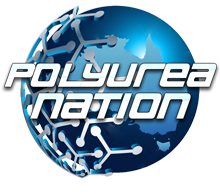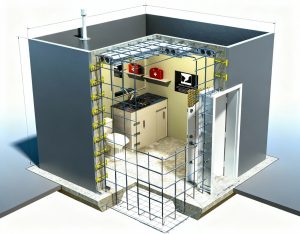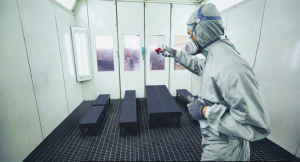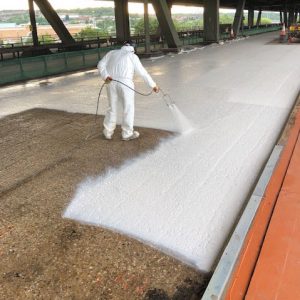Advanced flexible polyurea coatings applied directly to the substrate or geotextile liners provide seamless containment for facilities and field applications.
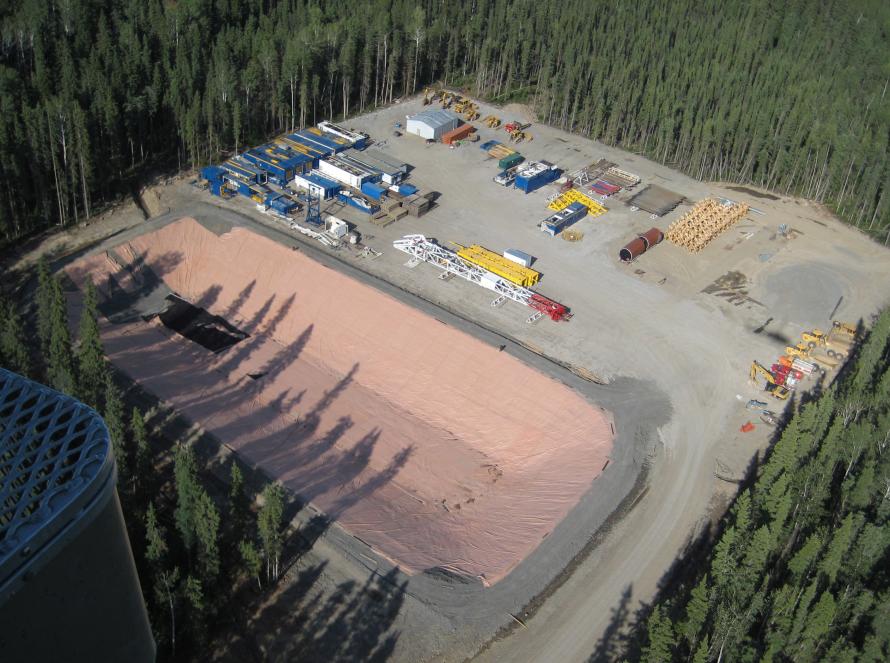
Traditional coatings have been too inflexible and not sufficiently elastic to accommodate ground, concrete, or metal substrate movement when used for primary or secondary containment. This defect can lead to cracks or holes forming in both the substrate and the coatings, compromising containment jobs.
Tough monolithic flexible coatings such as polyurea resolve this issue for contractors and engineers. When applied directly to concrete or metal surfaces, polyurea reinforces and protects the underlying substrate and can bridge gaps or cracks of 1⁄8 in. or larger.
Polyurea is being applied to geotextile liners that can be rolled out in sheets to shield more heavily impaired surfaces or in field applications such as dirt and gravel pads located on drilling sites. Once installed, applicators only need to coat the seams of the liners to create a monolithic surface that is ideal for containment.
Containment requirements
Whether at refineries, industrial plants, or other manufacturing establishments, federal and state regulations require primary and secondary containment systems to keep toxic or hazardous substances from running into the ground and potentially penetrating the water supply.
Though durable, metals corrode, and concrete cracks and is porous, so it will leach liquids if not coated. This demands secondary containment, which often takes the form of concrete pits with barriers established around the edge of a tank or other storage receptacle. Implied in this requirement is the understanding that primary containment is not certain.
Coatings such as epoxies, tars, and urethanes are often applied as an added wall of protection to protect these structures. However, these traditional coatings are often inflexible when cured and can break along with the concrete.
When applied to substrates such as concrete or steel, the spray-applied waterproof coating will create a durable, seamless, elastic, and shielding barrier that stops leaks and strengthens the integrity of primary and secondary containment systems. The coating exhibits superior physical properties such as hardness, tensile strength, and crack bridging and elongation up to 400% to create a robust, industrial-grade protective lining. Typical coatings do not hold up well to substrate movement or daily, seasonal, or process-related thermal expansion and contraction, leading to cracks and leaks.
Polyurea can bridge cracks and flex at a rate comparable to concrete and steel. This helps it last and seals the concrete so it does not absorb impurities if there is a spill inside the contained area.
Polyurea is designed for installation and use from -40 C to 177 C (-40 F to 350 F). It sets and cures quickly and will withstand decades of freeze/thaw cycling and wide deviations of temperature and humidity. Traditional coatings such as cementitious, epoxies, tars, and polyurethanes will prematurely fail if not installed under a relatively narrow range of temperatures.
After spraying the polyurea, return to service is almost instantaneous, making a big difference in minimizing production downtime.
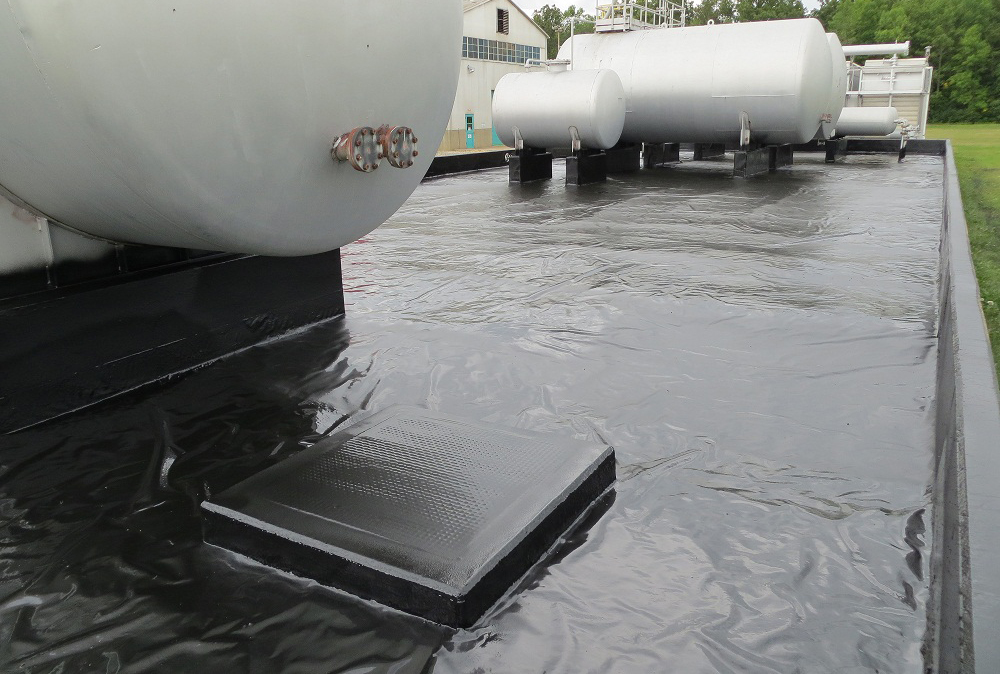
Effective field containment
Although spraying polyurea directly to the substrate has many benefits, pre-applied composite panels offer superior protection for containment over the soil, gravel, or even concrete that is too excessively damaged to be effectively rehabilitated.
This coating is especially suited for field applications that must be able to endure heavy traffic from trucks loading or unloading materials. Although plastic liners that are seam-welded jointly often are used for such applications, they are more easily punctured and can bunch up under heavy use.
Most people used to put various plastic systems on the good pads for primary containment at oilfield drilling sites, but many have moved away from that because the plastic is not durable enough.
Repairing plastic liners also presents a problem at the seams, when damaged areas are cut out, and new sections are welded in. The result is a patchwork liner with seams that are prone to failure due to improper welding. As a solution, geotextiles with pre-applied polyurea for their durability and reusability should be used.
Polyurea products are so much more durable than plastics for containment systems. When needed, you can custom-apply more polyurea millage to geotextile panels and berms to accommodate even the heaviest truck use and vehicle abuse.
To verify the strength of the polyurea coating on containment mats and berms.
“Some polyureas look fine the first time you spray them, but the preparation needed to get any seams to bond for reuse can be challenging. However, the extended open window for recoat and repairing the polyurea allows you to cut out any damaged section of geotextile easily, put a new piece in and spray the seams to make it virtually seamless again.
If you would like to learn more about using polyurea for your primary and secondary containment projects, please get in touch with us or ArmorThane USA Inc, the leading supplier of polyurea in the world!
